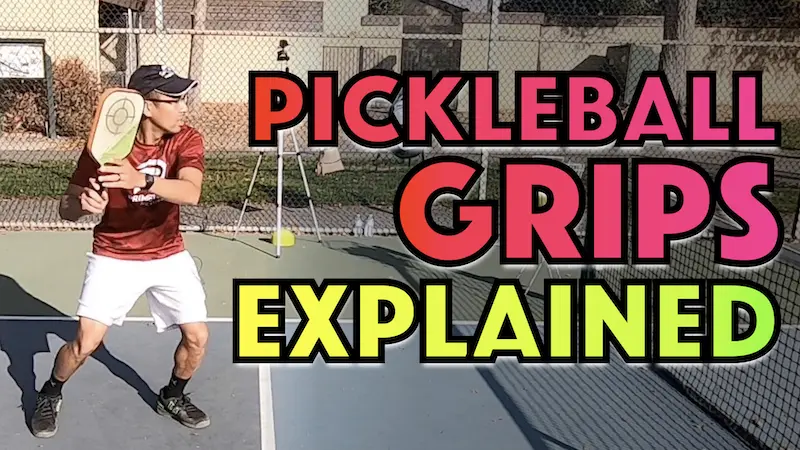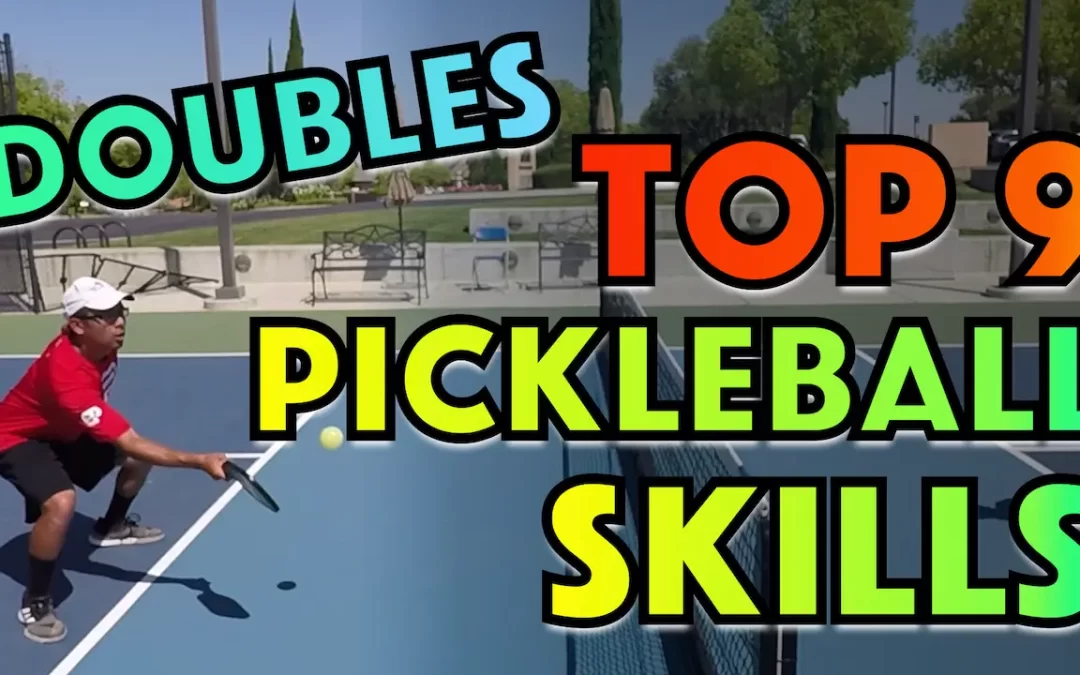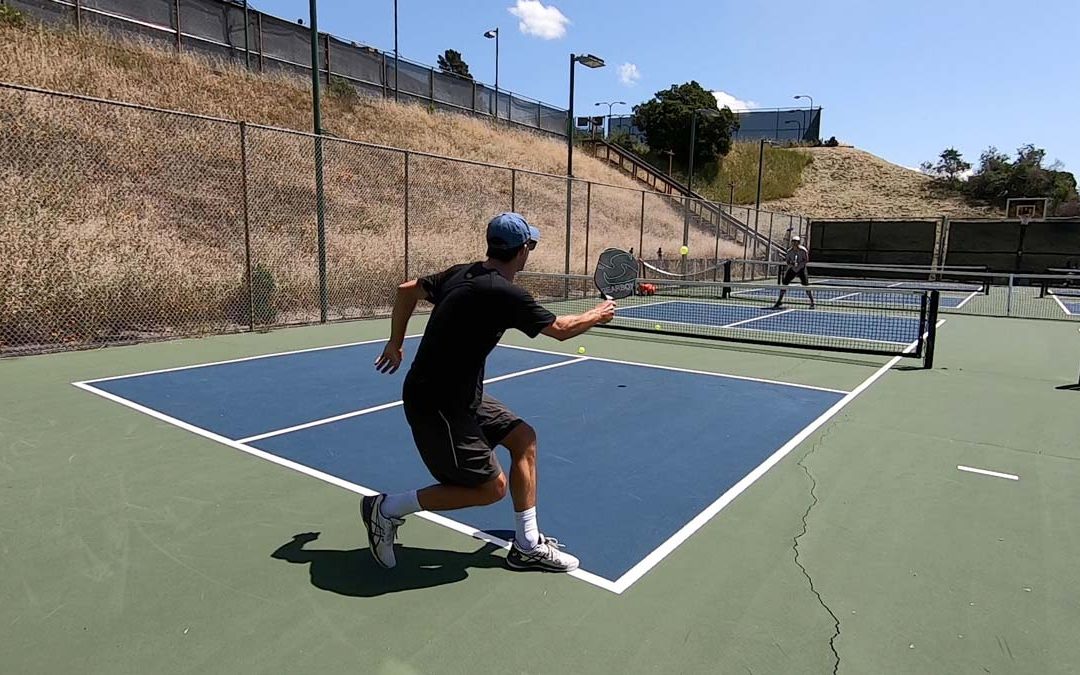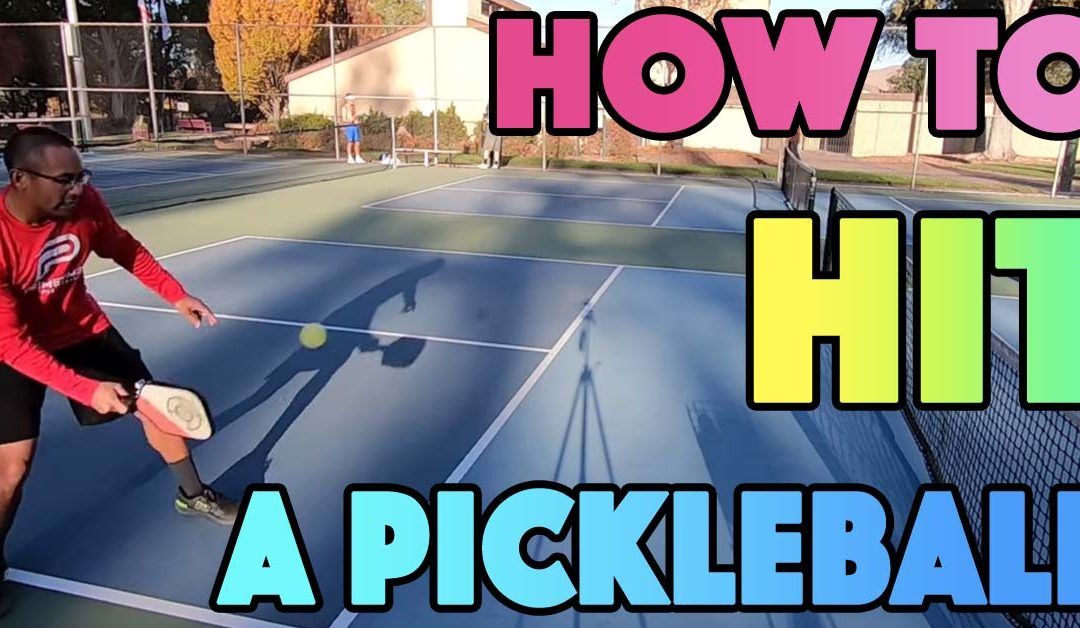Pickleball singles is a super exciting and up and coming sport. It is more physically demanding than its doubles counterpart because you have to cover the entire court by yourself. The strategy is different but skill, power and accuracy are still paramount along with speed and agility.
While doubles pickleball games is the preferred format at the recreational level while also tending to be more of a social game, singles is growing in popularity, led by growing interest in singles at the professional level.
Along with requiring a higher level of fitness, you will also require a deeper understanding of the basic pickleball rules to compete in a pickleball singles game.
We have broken down and compiled the rules of pickleball singles to help you understand this pickleball format.
You will also find information & tips about singles pickleball strategy to help provide you with a plan that will boost your confidence if you do decide to give singles pickleball a go.
Are you ready to up your singles game?
Pickleball Singles Rules Overview
Generally, many of the rules of pickleball singles are similar to the pickleball doubles rules with some key differences that we’ll cover shortly.
For instance, the fault rules, line calls, serving rules (such as alternating service courts), two bounce rule, and non-volley zone rules are applied the same as in pickleball doubles.
However, there are a few exceptions where pickleball singles rules differ from pickleball doubles.
For instance, in pickleball singles, each player has only one chance to serve unlike in doubles. Meaning that you continue to serve as long as you are winning points but once you lose a point, the serve immediately goes to your opponent. This makes sense, since you don’t have a partner who needs a turn to serve.
Another key difference is that when calling out the score in pickleball singles, the server will only call out two numbers. The first number will be the server’s score, and the second number will be the receiver’s score.
Here are the rules for playing pickleball singles.
Serving Rules
As mentioned, on a player’s turn to serve, that player will continue to serve until they lose the point. At which point the right to serve transfer to their opponent and that is called a “side out”.
Also, a player can only score points while serving. If you win a point as the returner, you simply win back the right to serve and do not score any points.
Pro Tip: It will be to your great benefit to have a powerful and reliable serve so that you can rack up point after point behind an imposing serve
Here are the pickleball singles official service rules that you should know:
- The serve must be hit diagonally cross court. The serve should clear over the net and land in your opponent’s diagonal service court. Should it land in the non-volley zone or on the non-volley zone line that’s a fault. Landing on the sideline, centerline or baseline is considered in play and not a fault.
- The serve should be hit with an underhand stroke: Contact with the ball must be made below your navel. Your arm must be swinging in an upward motion through contact, and the highest point of your pickleball paddle head should be below your wrist when it strikes the ball.
- You should start serving with at least one foot down on the court and behind the baseline. No part of your foot should touch the inner part of the court or baseline until after hitting the serve.
- You are only allowed only one serve attempt unless you play a let serve (do over).
Service Sequence Rules
- The first server should start from the right side of the court, behind the baseline and must serve into the opponent’s service area cross court.
- Your score will determine the service sequence and the side of the court you should serve from. For instance, for an odd score (i.e. 5-4), you should serve from the left side of the court, whereas for an even score (i.e. 4-5), you should serve from the right side of the court. Keep in mind that only YOUR score dictates what side you will serve from when you are serving and only THEIR score will dictate what side they serve from.
Double Bounce Rule In Singles
The pickleball singles double bounce rules helps extend the rallies in pickleball by eliminating the serve and volley advantage, such as exists in tennis. However, because there’s only one player to cover each side of the court, the points do tend to be shorter as compared to doubles.
- Both the receiver and server must allow the ball to bounce once before being allowed to play a shot out of the air (volley). This means the server should not advance to the net after the serve, otherwise they will risk being caught hitting a volley. The returner can advance to the net after the serve since the bounce of the serve fulfills their duty with respect to the two bounce rule.
- After those two shots, both players can hit the pickleball without it bouncing. For instance, you can hit the ball on a bounce or in the air on any subsequent shot. However, remember that you should never hit a volley when you are in the non-volley zone as that is a fault.
- If the ball bounces more than once on your side of the court before you are able to reach it, that’s a fault, and you lose that point. This is not the same as “double bounce rule”, which has been explained above, but it is still falls on the list of pickleball faults.
Volley Rules in Pickleball Singles
A volley is a pickleball shot hit in the air before the ball bounces.
- Once the double bounce rule has been met in a point, you can play the shot as a volley at any other time during that point.
- You are not allowed to volley within the non-volley zone.
- A pickleball player can be legally in the non-volley zone any time except when volleying a ball.
- It will be a fault if, when volleying a pickleball, the player steps his foot in the non-volley zone, this includes the associated lines. It is also a fault if the player’s momentum from hitting a volley causes them or anything they are wearing to come in contact with the non-volley zone. For instance, you should not step into the non-volley zone during a follow-through and/or when attempting to “catch your balance” from hitting volley.
Net Rules
- When the ball touches the net while serving and lands into your opponent’s service area, this used to constitute a let and the server would get a “do over”. This rule has changed and you now play on if the serve clips the net.
- If the ball hits the net and goes out of bounds or falls on your side of the court while serving, it is a fault. As a result, your opponent is given the serve.
- The ball should pass over the net for every shot played (with one exception explained next). If the ball hits the net on its way over to the other side of the court play continues.
- If the ball travels sufficiently wide enough and a player can hit it around the net post and keep it in play, into their opponents court, that is considered a legal shot and play continues. Unlike the ball touching the net and still being in play once it gets over to the other side, the ball can not hit the post on its way to landing in the opponent’s court. Hitting any part of the net post is considered a fault.
Fault Rules
A fault is any part of the play that stops the game because of a violation of rules.
Who Serves?
- In recreation play, the first server is designated by the convention at that facility (i.e. player on the side closest to the street, player on the side next to the building etc…, it varies by facility and is relatively random). In competition, the first server is designated by a coin flip.
- If the server makes a fault, the server loses the serve and becomes the receiver.
- If the receiver commits a fault, the serving player scores a point.
A fault in pickleball singles can occur for many reasons, the most common ones are committed as follows:
- There is a violation of the service rule.
- The ball is hit out of the air or volleyed while the player is in the non-volley zone or before the two bounce rule has been satisfied.
- The ball goes into the net while serving or on any shot subsequent ot that.
- The ball does not land within the boundaries of the court on the opposing side.
- The ball does not land within the boundaries of the service area on a serve.
- The ball hits a player or anything the player is carrying or wearing.
- The ball bounces more than once on either side of the court.
- Any part of the player, the player’s paddle or clothing touches the net post or the net when the ball is in play.
- The ball hits any permanent objects before bouncing on the court. This does not include the net.
Line Call Rules
- All balls touching any line other than the non-volley zone line on a serve are considered in-balls.
- Balls touching the non-volley zone line on a serve are considered faults because the non-volley zone line is considered part of the non-volley zone.
Out of Bound Rules
- If the balls lands outside the confines of the court (and the lines) it’s a fault. If you were the server, you lose your right to continue serving on that turn. If you were the receiver, the server scores a point and they continue serving.
- If any part of the ball touch the line, the ball is considered still in bounds.
Scoring Rules
- A pickleball singles game is generally played up to 11 points but can also be played to 15 or 21 depending on the setting.
- The winner must be 2 points ahead of the opponent. If the score gets to 11 – 10, the game continues until one player is ahead by points 2 points.
- Points are awarded when you win an exchange but they are never deducted for losing an exchange.
- The score is only two numbers. One for the server’s score and the other for the receiver’s score.
- One player keeps serving until they lose an exchange.
5 Pickleball Singles Strategies and Tips
1. Force your opponent to use the backhand
Most players have a strong forehand and a weaker backhand. Therefore, you should try to force your opponent to use their weaker backhand.
However, there are rare cases where some players have a stronger backhand and a weaker forehand. In that case, you should attempt to take advantage of their forehand and hit mostly to that side during play.
On their weaker side, your opponent will generally be less offensive and make more mistakes which is why it is to your advantage to hit to that side.
2. Serve from near the centerline
Serving from near the centerline will allow you to effectively cover both sides of the court when the serve is returned.
You must serve into the service box but the return can come back anywhere in the court so you want to be in the best position to cover it which would be from a position near the center of your side.
If, as the server, you initiate the point from a position nearer to the sideline and you hit a powerful serve, this gives your opponent an opportunity to hit their return into a big gap you’ve now left open on the court.
It won’t be easy to cover a well hit return struck down the line if you serve from near the other sideline.
3. Make use of your forehand
The forehand stroke is generally a more effective and powerful shot for many pickleball players. We’ll assume that you too fall in the category of players that prefer their forehand.
Though your opponent will likely be trying to avoid your forehand, as you are trying to avoid theirs, do your best to prevent that from happening.
Try to use your forehand as much as possible, even if you will be required to move around your backhand at times. Just don’t run so far out of position that you leave the other side of the court so open that you now can’t cover it.
How far you can go to hit a forehand that has technically come to your backhand side is a case by case basis depending on how quick and agile you are.
4. Hit corner shots and angle shots
To win a pickleball game, you need to keep your opponent moving all over the court and from side to side.
For instance, hit a shot to the left if your opponent is moving to the right. If they are moving left, hit a shot to the right. This will increase the chances of your opponent making forced errors that will win you the point on your next shot.
It will also give you more control of the game.
5. Have a strong serve and a great return
Having a strong serve and a great return sets you up very will to be competitive in singles play.
We recommend hitting deep serves to put pressure on your opponent and prevent them from coming up to the net after their return.
When hitting a return shot, try to hit deep shots and away from where your opponent is standing. Follow your return up to the net if possible.
Your goal is to be constantly putting pressure on your opponent with the serve and return as well as every shot after that.
Final Thought
Rules of pickleball singles should not be difficult if you have ever played or watched pickleball doubles. This is because most of the rules are the same with only a few minor variations.
Playing pickleball whether it be a singles or doubles game should be fun once you master the basics.
Understanding the rules, basics, and tips of pickleball singles strategy that we’ve outlined here will have you well on your way to take a shot at playing a successful singles game.
We hope this pickleball article will help you to get started with or level up your pickleball singles game. Now get out there and play some pickleball singles.






